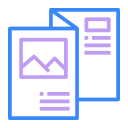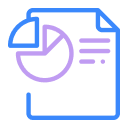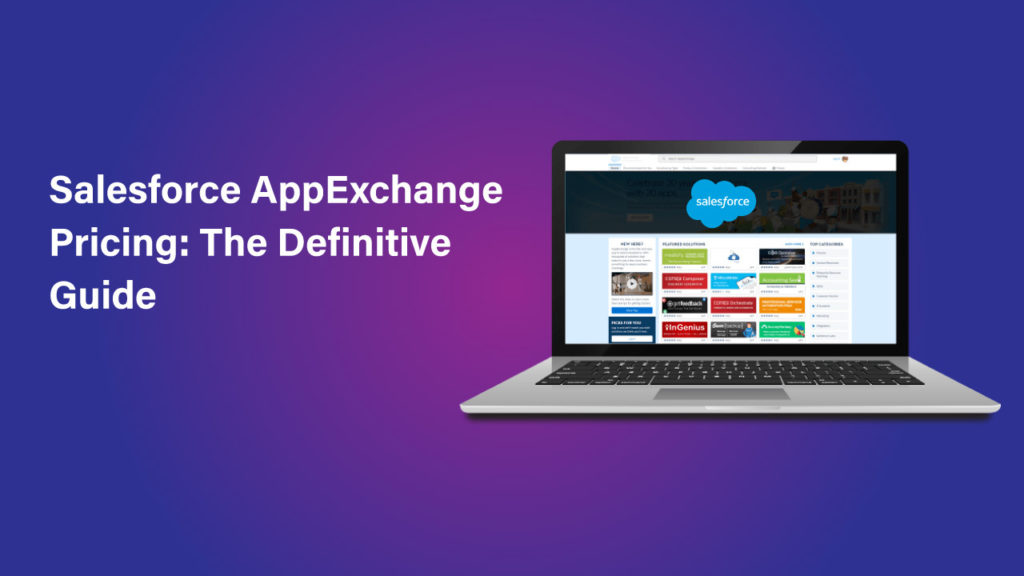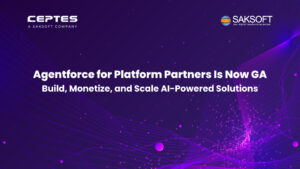Salesforce AppExchange is a business application marketplace where Salesforce customers can find, install, and utilize a wide range of third-party applications. It is designed to extend the functionality of Salesforce and provide users with additional features and capabilities.
More than 90% of Salesforce users rely on AppExchange apps, spanning cloud solutions to consulting services. It’s a vital resource for any Salesforce project. App creators find profit opportunities, while businesses enhance their Salesforce org’s capabilities through valuable assets and insights.
Benefits of Salesforce AppExchange
Here are some key benefits of utilizing Salesforce AppExchange for your business:
- Expanded functionality: Salesforce AppExchange offers a vast ecosystem of applications that can enhance your Salesforce implementation. These apps can help automate processes, improve productivity, and provide industry-specific solutions.
2. Customization: With Salesforce AppExchange, you can tailor your Salesforce instance to meet your specific business needs. The marketplace offers a wide variety of applications, allowing you to select the ones that best align with your goals.
3. Time and cost savings: Instead of developing custom solutions from scratch, you can leverage pre-built applications available on Salesforce AppExchange. This saves you time and money, as you can quickly implement solutions that have already been developed and tested.
4. Community-driven innovation: Salesforce AppExchange is a hub for innovation and collaboration. Users can rate and review applications, providing valuable feedback to the developers. This open ecosystem encourages continuous improvement and ensures that you have access to the latest and most reliable applications.
5. Scalability: As your business grows and evolves, Salesforce AppExchange allows you to easily scale your Salesforce implementation. You can add new applications that support your expanding needs without the need for extensive development efforts.
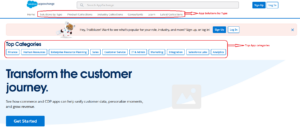
(Source: Salesforce AppExchange)
Types of Partner Program Licences in AppExchange
The primary step in launching your monetized app is signing up for the Salesforce Partner Program. There are 2 different kinds of partner licenses to opt from: depending on the app type you’ll be offering. The licensing you choose impacts what your customers can achieve with your apps.
Let’s deep dive into these licences categories:
ISV licenses- 15% OEM Embeded licences- 25%
ISVforce Licences: This licences is designed for partners who create apps specifically to be sold to Salesforce customers. These apps are typically listed on the Salesforce AppExchange, extending or enhancing the Salesforce platform’s capabilities for end-users within the Salesforce ecosystem.
ISVforce licences entitle Salesforce to a 15% share of your sales.
OEM License: The OEM (Original Equipment Manufacturer) licences is for partners who wish to integrate Salesforce technology directly into their own products. This allows them to sell their products, enhanced with Salesforce capabilities, to customers outside the traditional Salesforce ecosystem, often without requiring the end-user to have a Salesforce license.
OEM Embedded licences entitles Salesforce to a 25% share of your sales.
Entering the Salesforce AppExchange as a PDO Partner or an independent software vendor involves understanding the financial commitments required to leverage this powerful platform.
As AppExchange is a part of Salesforce so it shares a revenue model, which relates to the pricing model in which you decide to sell your apps. This model ensures that as your app’s success grows, Salesforce supports you with expert guidance, security protocols, and development tools necessary for your app’s longevity and compliance.
Marginal Royalty Bands- 2020
Salesforce’s royalty fees underwent a significant change with the introduction of Marginal Royalty Bands in 2020, shifting from fixed rates for OEM and ISVforce licenses.
For OEM partners generating over $20 million, the royalty rate reduces to 15%, and for ISVforce partners, the rate drops to 10% after crossing certain revenue thresholds. This tiered system benefits larger developers by decreasing the royalty percentage as sales increase, encouraging the development of more innovative and successful products on the platform.
Security Review- A Critical Finance Consideration
Beyond royalties, the AppExchange Mandatory Security Review is a critical financial consideration for potential sellers. This compulsory review, priced at $2,700 for the initial year and $300 for subsequent years for paid apps, ensures your application meets Salesforce’s stringent security standards. The review fee is waived for free apps, underlining Salesforce’s commitment to fostering a secure and diverse ecosystem. This investment not only ensures the protection of user data but also enhances the credibility and trustworthiness of your app among potential customers.
Selling on the Salesforce AppExchange involves these essential costs—royalty fees based on your licensing model and the mandatory security review fee. As a PDO Partner, navigating these expenses wisely and understanding the value behind each cost can set the foundation for your success within the Salesforce ecosystem.
Read here to know more about AppExchange security review!
Pricing Models and Strategies for AppExchange Apps
Pricing models and strategies play a crucial role in determining the success of AppExchange apps. Salesforce AppExchange is the leading marketplace for enterprise cloud applications, and having a well-defined pricing strategy is essential to drive customer adoption and generate revenue.
- Freemium Pricing Model
The freemium pricing model is a popular strategy where basic features or functionality of the app are offered for free, while more advanced features or additional capabilities are available at a cost. This model allows app developers to attract a large user base by providing value through the free version while generating revenue from users who are willing to pay for enhanced functionality. Key considerations for implementing the freemium model include:
- Clearly defining the limitations of the free version to encourage upgrades
- Offering compelling paid features that provide significant value to users
- Determining the right balance between free and paid features to drive conversion rates
- Pay-Per-User Pricing Model
The pay-per-user pricing model involves charging customers based on the number of users who will be utilizing the app. This model is commonly used for apps that cater to specific user roles or departments within an organization. Key factors to consider when implementing this pricing model include:
- Ensuring the pricing aligns with the value delivered to each user
- Offering discounts for larger user groups to incentivize adoption
- Implementing flexible pricing tiers based on the number of users to cater to different customer segments
- Usage-Based Pricing Model
The usage-based pricing model allows app developers to charge customers based on the actual utilization of the app’s functionalities or resources. This model is beneficial for apps that have varying levels of usage by different customers or specific components that are resource-intensive. Considerations for implementing the usage-based pricing model include:
- Defining clear metrics for usage that align with the value proposition of the app
- Offering transparent pricing calculations based on usage metrics
- Providing options for customers to optimize their usage and reduce costs if necessary
4.Custom Pricing Model
The custom pricing model allows app developers to tailor pricing based on specific customer requirements, such as enterprise-wide deployment or unique integration needs. Implementing a custom pricing model involves:
- Understanding the specific needs of the customer and delivering a personalized pricing proposal
- Conducting a thorough assessment of the effort, resources, and value provided for custom requirements
- Ensuring proper documentation and communication of custom pricing terms
Register today for the webinar to understand what are the different pricing strategies you can choose for your product.
FAQs
Q: How long does the security review process take?
A: The security review can take several weeks to a few months, depending on the complexity of your app and the current queue.
Q: Can I change my app’s pricing after launching?
A: Yes, you can adjust your pricing strategy post-launch, but ensure you communicate changes clearly to your customers to maintain trust.
Q: What support does Salesforce offer to ISV Partners?
A: Salesforce provides a range of support services to ISV Partners, including access to development resources, marketing and sales opportunities, and guidance on best practices through the Partner Community.
Q: How important is customer feedback?
A: Extremely. Customer feedback not only helps in refining your app but also influences potential customers through reviews on the AppExchange.
Plan Now to Release your App Strategically
Pricing your Salesforce app requires a strategic approach that considers your target market, the value your app provides, and competitive pricing strategies. Conduct thorough market research to understand what similar apps charge and the features they offer. Consider offering multiple pricing tiers to cater to different sizes of businesses and their varying needs. Also, think about offering trial versions to encourage adoption.
Let us help you define the right pricing strategy for your AppExchange product !!








